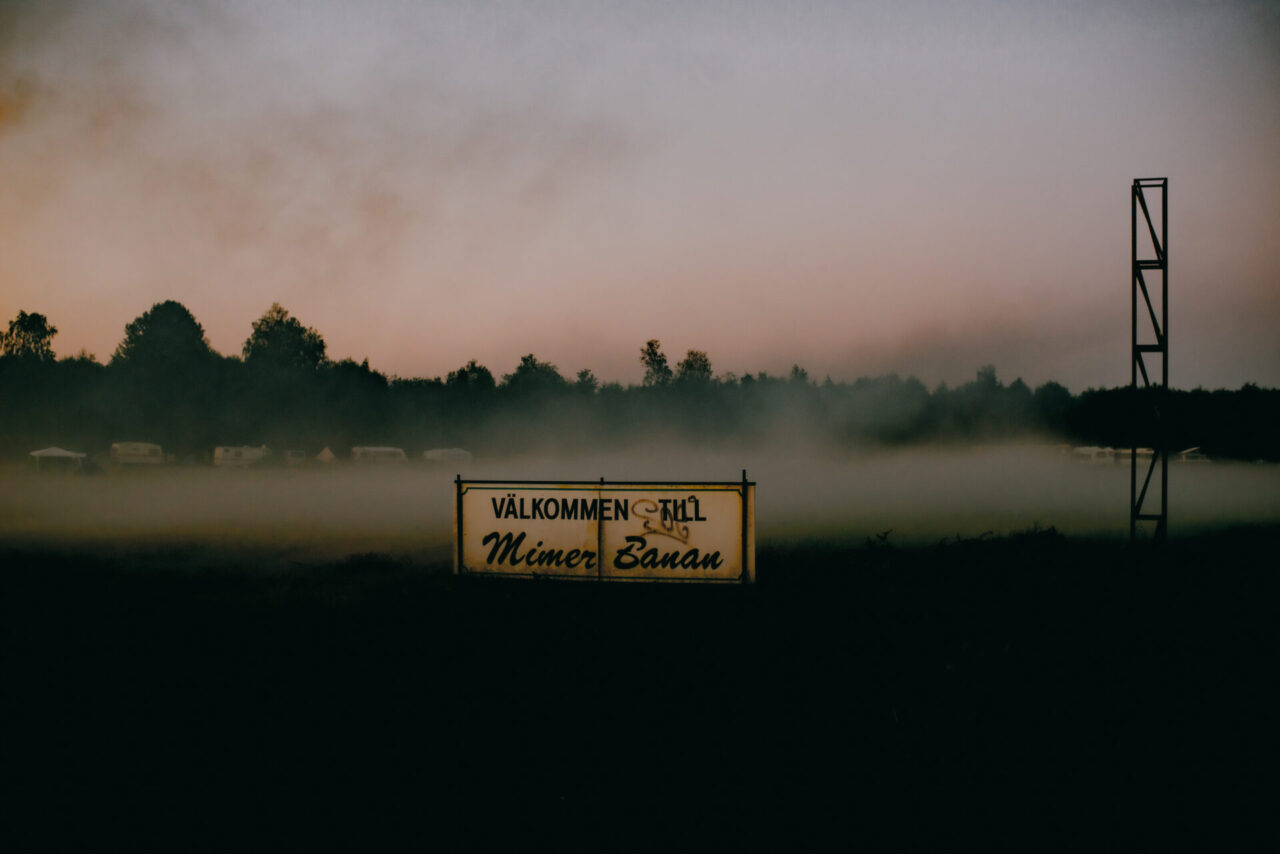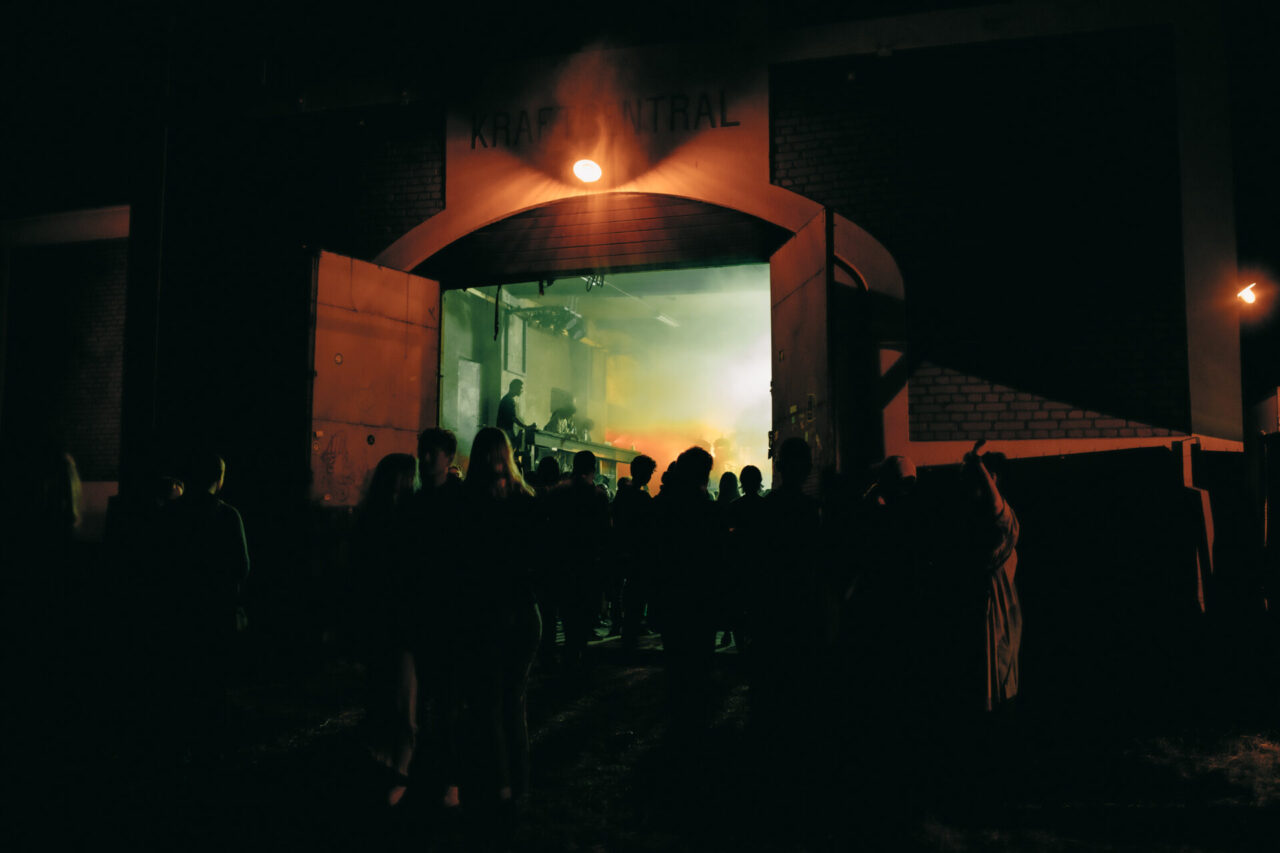In the Half Light:
On Norbergfestival
A book in the Norberg town library is shown to me by the librarian. It’s written by her husband Lars-Erik Lärnemark and its title translates as: In the Morning We’re Running Back to the Mine. Within its pages are scores of songs from the region. Worker’s songs from the 19th century and older. Songs of celebration, quotidian life, resistance. Worker’s songs which tell a history, the material conditions of their labour read in these passed-down melodies. But to whose ears now? Their places of work rest emptied or reclaimed by the forest. Lost industry in the UK and US inspired famed 90s raves: Manchester’s The Haçienda; The Awakening; Eclipse; Sunrise – these are spaces which echoed the strikes, chants against cruel optimisation which repeat now only in notation, their sounding replaced by euphoric, troubled music. In Sweden, Norbergfestival presents a different relationship with the post-industrial.
On the wall of the library is a wood ‘relief’ as the librarian calls it: a carving in three enormous panels which depict a mining strike from 1891-1892. Long before Thatcher, mineworkers here were protesting the austerity imposed upon them by the endless competition for new profit. In deep incisions, the big boss is carved in the place of the sky. Great, ghoulish, his face is a distorted Tomte. 1891’s strike played a pivotal role in the development of the Swedish Social Democrats – supporters from around the country sent money and food to these miners in Norberg. I’m told this strike has a special place in the political history of Sweden. Here there developed a politics of sharing and aid tempered by the simultaneously emerging Second International.
Originally published in Texture Magazine Issue #2. To read the rest of the issue, click here to purchase a copy.
When you arrive in Norberg the ramifications of social democracy are evident in the prosperous family homes around town. Solid painted red homes with green yards and children’s cubby houses. ‘Perfect’ middle class homes in an industrial region which in other countries would be marked by the dispossessed. This isn’t a ravaged post-industrial city emptied of its livelihood by capital. But, visible from kilometres away, the mine still looms over it. You might imagine a hole in the ground, a little wood frame and a trail of marching peons carrying ore on their backs. Work. Work. But the building which marks the great entrance to the deeper earth is colossal, a vast brutalist cenotaph. From where I’m staying on the bank of a nearby lake, I watch a man climb onto his two-story roof to sit and watch the forest. The tower of the mine shows itself through the trees. His Volvo is in the driveway. An automated lawn mower moves around his yard. At this time of year the land is filled with wildflowers: Yellow Cowslip and Mullein and blue Water Forget-Me-Not.
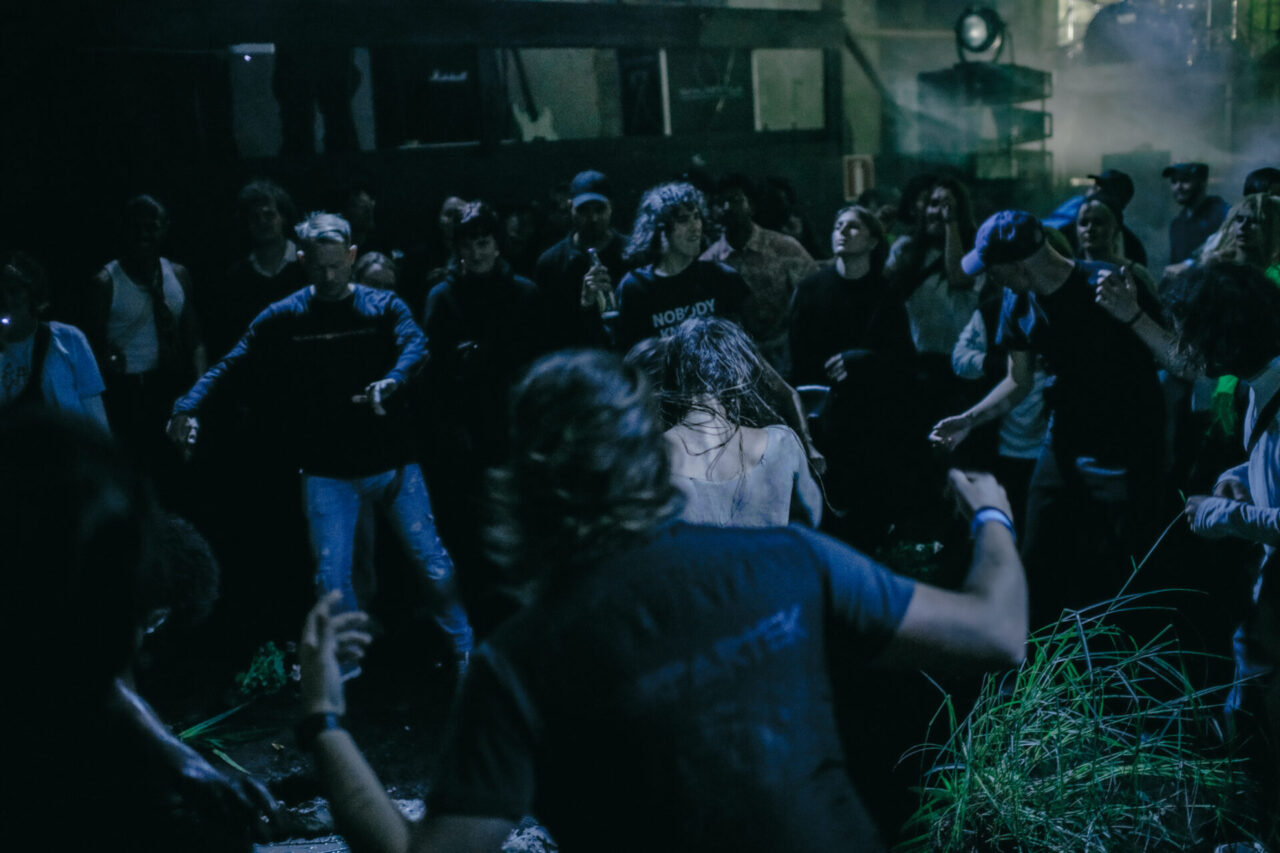
Deeper into the forest, low-lying ferns and moss remind me of temperate rainforests back home. Slow and tender slugs emerge after the rain across pockets of ruined land, suggesting old deforestation; charcoal for the kilns. When Mimerlaven (the mine you can see from all around) was built in the 1950s, carts filled with still molten liquid iron moved on tracks around the forest. This was a period of post-war optimism, and the mine was one of the most advanced in the world for its time. I spoke to architect and former festival organiser Johanna Brandt about the site; there are doctoral theses in the library written about this building. Its tower is smooth, moulded from a continuous additive process of forming concrete. A long extruded bridge exits the main building, utilising gravity to sort the rock. A booming, stainless world briefly emerged here, rustproof, or not: the mine was only open for 20 years. The optimism of new industry washed-out with the plastic linoleum of the 80s. Concrete and steel became television, and the part-owner of the mine sold his industry to start Sweden’s TV equivalent of the transgressive US channel MTV.
Since Mimerlaven’s closure in 1981, cultural events have taken place here for 40 years. The mine, as I understand it, quickly became a summer hub for open-minded music and performances. One festival, in particular, endured from its tiny origins to become a cult favourite across Sweden and Denmark. From working songs of labour to their owner’s Reality TV pop, Mimerlaven today sees Norbergfestival present impressively original, moving music and art within its walls. Echoing the programmers, Johanna tells me: “it is more of a cultural mine than a mine.” Unlike the sonic impositions within other squatted and crumbling remnants of industry, this festival has found local government support, so I am curious: in my fourth year returning to Norberg, how does the lingering resuscitation of post-industrial music function and respond to a space which is increasingly decoupled from its material past—a monument without mourning, in a middle-class town resuscitated by democratic socialism, filled with seemingly open-minded residents enthusiastic to host a festival in their old place of disinherited work? And what of the other acts that perform outside the mine, the ones no longer fascinated by steel and concrete and machinery and noise, rather, a different sonic immateriality, all shiny, marked by its digital placelessness?
His Volvo is in the driveway. An automated lawn mower moves around his yard. At this time of year the land is filled with wildflowers: Yellow Cowslip and Mullein and blue Water Forget-Me-Not.
On day one I walked through town to the festival grounds. I was eager to see the faces of friends I hadn’t seen in three years. Like permafrost melting or something equally Northern, the familiar traditions of the festival emerged: blackening banana peels placed on the street sign of the mine ‘Gamla Banan’; two festival goers stopped watching garden roombas, automated flat discs on wheels performing the labour of caring for the earth. Thawed friends emerged, and new little faces too, covid babies, strollers.
The festival has three main stages, and a fourth space in the basement of the mine. There is an old electrical building from 1912 called Kraftcentralen. A tent called 303—this year operated by an influx of Finnish volunteers – and a ceiling strung with spidery crochet (I am told the volunteers were knitting this canopy on the boat trip over from Finland). Then there is Mimerlaven itself, the space for large commissioned new works, long durational sounds, and music which must attempt to conform itself (or allow itself) to be changed by the 6 or more second delay caused by the enormity of the space.

The volunteer culture of this festival is explicit to its identity. Hard work is performed beyond the cost of a ticket. It’s done for community. And the community, like only a proper community can do, produces its own outcomes. The 303 stage is strikingly programmed with lots of young acts which to me represent a marked and shifted expression moving away from high BPM nostalgia. One person tells me eagerly: “it’s 2022, the tempo wars are over!” Knife Girl sings earnest, gravitational h****pop (we can’t use the h word). Instead, the sheen of the synthetic textures of trance appear slower, more romantically driven, and when quick—jubilant and temporary—not laboured by the sense that the speed must last forever. I reflect on the sincerity of this new generation of Zoomer music—preoccupied, I think, with being vulnerably gorgeous, and with overtly vocalized feeling. Over in the mine Erik Enocksson provided an inaugural swell of 4 voices and string quartet plus double bass. A breathing in and out of the building, unsettling old lockdown dust with drawn-out minor-seconds, and pigeon feathers, and red fur on an old mattress which might have housed a family of foxes. Later, Sofie Birch sung a duet with the cavernous space, contributing its own natural accompaniment to amplified voice in the form of a complex echo. I thought about the beautiful lighting in the mine. Small circles blue and pink circled the walls innocently.
The feeling of entering the building is an uncommon one. And then staying within it, also. An atmosphere of its own can be felt in the difference of air pressure. A change of stillness. People say big buildings generate their own ethers, and the mine makes you think of ancient air. Air that has never left. Air which rises up from the shafts below, filled completely by water, and which will never be breathed again.
Venturing into the forest to see a 16th century open mine with new friends, we found the rumoured pit filled all the way from the depths to its entrance with abandoned stairs from the stair factory. We followed game tracks back through the forest to the road, eating wild strawberries by the asphalt.
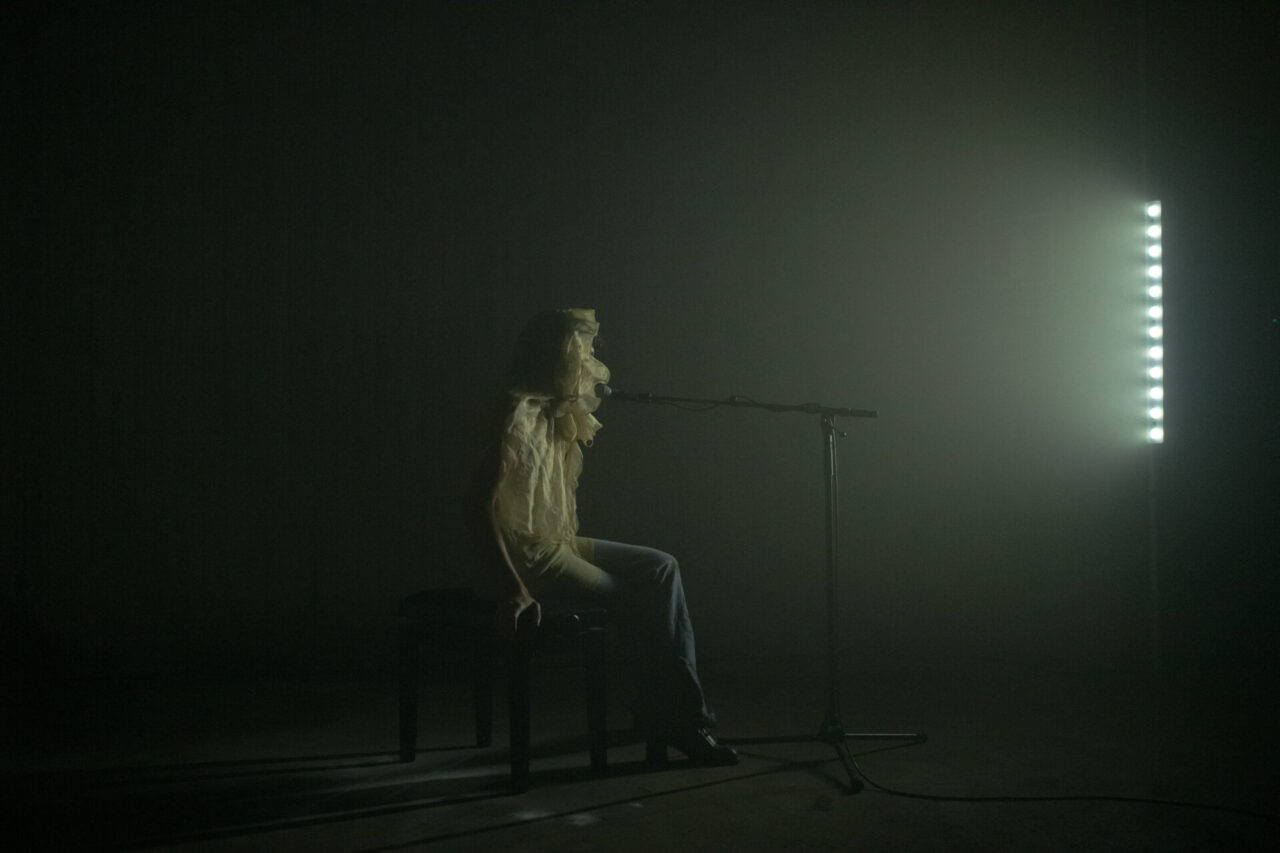
That night Loraine James played to a dense crowd, an intricate reworking of favourites for the big room and the big sound system. And I looked back at the volunteer team behind the stage; people who have tirelessly helped make this space over the prior week and know just how to light and engineer for their own creation. Closing Kraftcentralen, Aquarian, big-hearted selector, played a set of impeccable gems. I noticed punters yelling out words of thanks throughout the following day. A memorable image: Aquarian the next night holding a freshly purchased beast’s horn from the Norberg curiosity shed Abrahamsgården. A local told me the horns were once used in some old Swedish fishing practice, but here they have become a now-famed receptacle for sharing Absolut Vodka.
I was drawn into a performance in the basement called Krossverket. PRICE appeared lit amongst the concrete, dressed like a pale sunflower, or what I imagined might be the outfit of an 18th century baby. At one point, vaping on a leaky goblet filled with dust, he showed his face to the audience, white powder covering his mouth and cheeks, with the pale slight of Venetian lead ceruse. Latvian producer Himera hovered seriously, looking downward, and produced an unwavering selection of virtuosic arp melodies, faultlessly transitioning and consistently tender. ‘You are Safe and Loved, to the Stars and Back’ a track communicates. Rekindling an adoration for music I worried to be dormant within me, 303, with its central decks and joyous audience gathered around on all sides, felt just that—profoundly cradling.
On day two I woke determined to learn more about the town and its culture. Walking along the lake, Swedish bike riders each offered a “hej hej” as they passed. Over the years coming here, people who have lived their whole lives in big cities observe some oddities. I don’t know if all small towns are like this, but there are a collection of conflicting cultural sights in Norberg. An Elvis festival has routinely coincided with the experimental music occurring in the mine. Muscle cars and impersonators mark a fascination with the US which has coloured a range of diners around town with what I imagine to be an eerily small-town southern-state feeling. There is the famous cake house covered in doyley lace, owned by a banking magnate, newly rebuilt after being burned down under dubious circumstances. And this year when the volunteers arrived (I was sent pictures) they were greeted by the spectacle of a pony chariot race. Elvis and Romans.
When I spoke to the town librarian, she told me that Norberg has always been welcoming to festivals of all kinds. As an outsider, it seems to be a very endearing relationship between the residents and their Festival. I can’t imagine many other villages with their own well-preserved quietness which would engage so welcomingly with this influx of people. I wanted to know about the demographic of the town, where people worked, and how they got by. I was told about the nearby industrial hubs which now imported their ore from elsewhere. And I was told about the concrete stair factory which employs many of Norberg’s own residents. But while talking, I got the sense that, like many transforming regional towns, neoliberal fragmentation has displaced a prior personal identification with the means of production. If there are a few lingering industries in the region, they are increasingly dehumanised and automated ones. Venturing into the forest to see a 16th century open mine with new friends, we found the rumoured pit filled all the way from the depths to its entrance with abandoned stairs from the stair factory. We followed game tracks back through the forest to the road, eating wild strawberries by the asphalt.
We trace out all the fibres of the earth, and live above the hollows we have made in her, marvelling that occasionally she gapes open or begins to tremble—as if forsooth it were not possible that this may be an expression of the indignation of our holy parent. We penetrate her inner parts and seek for riches in the abode of the spirits of the departed, as though the part where we tread upon her were not sufficiently bounteous and fertile…The things that she has concealed and hidden underground, those that do not quickly come to birth, are the things that destroy us and drive us to the depths below; so that suddenly the mind soars aloft into the void and ponders what finally will be the end of draining her dry in all the ages, what will be the point to which avarice will penetrate. How innocent, how blissful, nay even how luxurious life might be, if it coveted nothing from any source but the surface of the earth, and, to speak briefly, nothing but what lies ready to her hand!
~ Pliny the Elder, Natural History
The craters of old mines dot this region. Mining has been practised here in Bergslagen since the 12th century, perhaps earlier. It’s a practice philosophically and poetically derided, as Pliny the Elder writes in his 1st century AD proto-environmentalist plea, Natural History.
In Milton’s Paradise Lost the devils are themselves miners, carving out the centre of the earth. Technology is the opposite of angelic. Digging is done in search of an irredeemably lost, irreclaimable wisdom. These devils make optik glass, microscopes, gears and machines, they try to reproduce via means lost in their fall from heaven. Each attempt to technologically heal something ruined instead resulting in a new form of scarring. Mosquitos are rampant in the forests here, uneaten by birds now long since dispossessed of a natural habitat after a millennium of mining-led deforestation. When England ravaged its own forests building ships for its colonial fleets, the empire turned to Sweden and this region’s osmund iron. It was the second empire to plumb these depths, after Sweden itself had done the same. Colonial wrongs mar this ecology.
Iron is extracted from loam, copper smelted from ore.
He drives back the darkness; perfecting his search,
piercing the dark stones and death-shade…
The earth! it brings forth bread,
yet down below it churns like fire;
The stones of it are the place of sapphires,
and the clods of it are speckled with gold.
No eagle knows that hidden path,
no vulture’s eye has seen it.
Proud beasts have not set foot on it,
and no lion has prowled there.
Against the flinty rock he sets his hand,
and overturns the mountains by the roots.
He cuts channels through the rock,
that his eye might see every precious treasure.
He restrains the streams from weeping,
that hidden things might be brought to light.
But where shall wisdom be found?
Where is the place of understanding?
Man knows not its price;
neither is it found in the land of the living.
The abyss says, ‘It is not in me’;
the sea says, ‘It is not with me.’
~ Job 28: 2-14. Translated in Hydroplutonic Kernow.
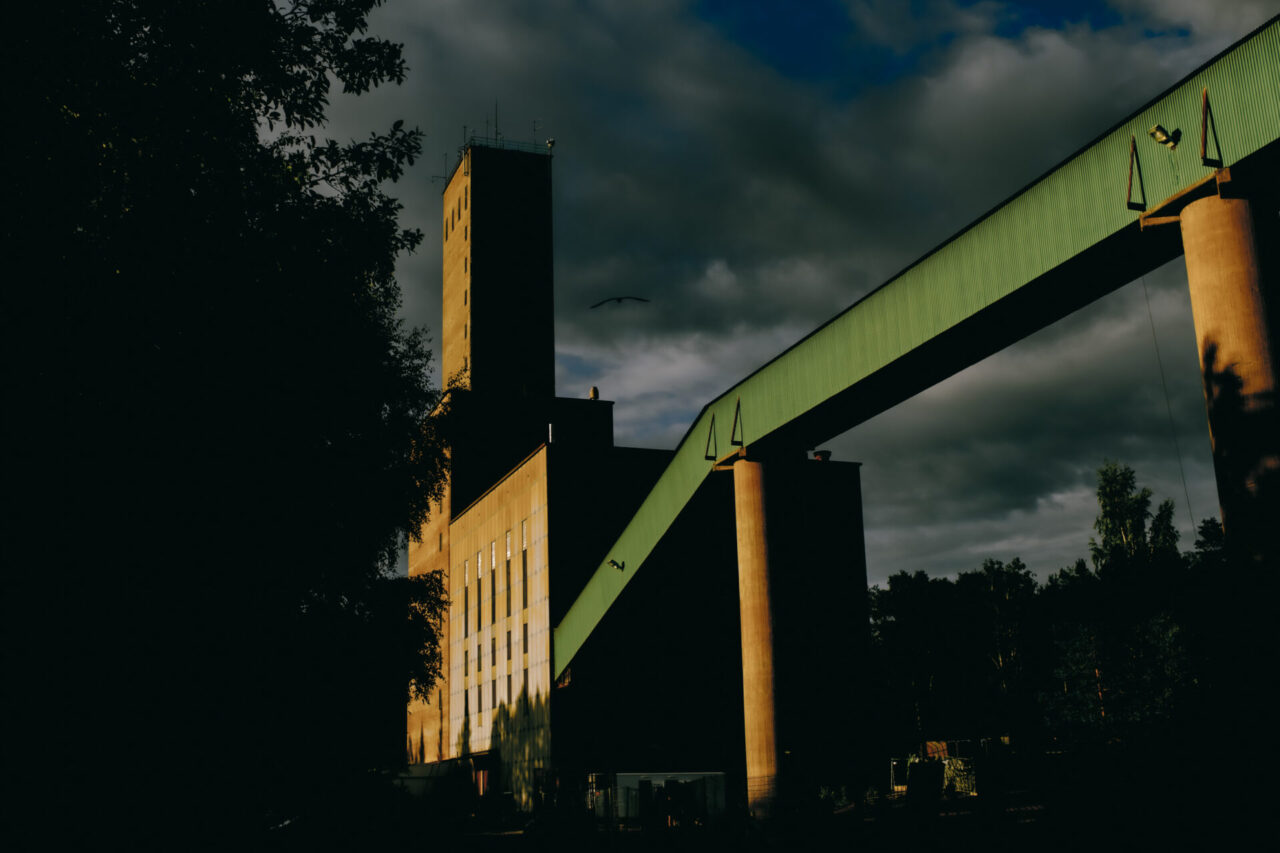
Coloured too by the presence of iron, a red river flows past rusty barns and terracotta roofs, through a lock, and out into a great swimming lake on the festival grounds. From there, I arrive just in time for Asian Dope Boys and their theological 9-hour performance. An Edenic garden is dropped in the centre of the stage, dirt poured loose upon concrete and planted with flowers and reeds which line an artificial pond. Kraftcentralen has been the site for ambitious and sculptural performances in the past. In 2017 Maria W Horn drove her fog filled Volvo into the centre of the building; in 2016 (my first year at the festival) Amnesia Scanner set up rotating projectors which spoke to the audience like Hal 9000. This year, the garden in the electrical house is circled by a collective of performers who walk expressly and ceremonially through the dirt. I say Edenic, but when interviewing Oxi Pëng, who wrote a prelude to this performance called Physis, she describes the garden in less spiritual terms. The flowers and the dirt are not a decoration she says; this is a non-human aliveness which encourages a decentring of the human. This is not a form of escapism, there is a dialectical movement to the experience of exiting the world for 9-hours. We don’t escape to become apolitical subjects, indifferent to the outside world. We escape to make comment on the condition of being not in the performance. Oxi Pëng quotes K Allado-McDowell to me:
“I’m lost in a forest” writes Allado-McDowell.
The machine GTP3 responds: “the forest wants you to be lost within it.”
“What happens when the end of the world comes?” she questions.
An answer: “searching for an opening, a feeling of togetherness created only in the breaking down of distinctions between performer and viewer. A revelling in a shared moment which has been created by everyone and everything in the room, human and non-human. Something precious.”
Hidden at the end of the text are the words “Let’s Sprout”.
In Mimer, Maria W Horn and Sara Parkman’s Funeral Folk ends in a call and response sung between the audience in the mine and the singers on stage. A communal choir. And then, at half past midnight Iceboy Violet begins. Voice breaking up, exhausted, panting, doubled over, they perform flawlessly with Exploited Body watching on with infectious adoration. Iceboy, voice nearly polyphonic under strain, hurtles into the crowd further and further until they are stumbling, falling, and suddenly supported and held and hugged by strangers. Face smothered, hidden from view by many bodies: “it’s cold outside,” they call. “But it’s warm in here, with you.”
Face smothered, hidden from view by many bodies: “it’s cold outside,” they call. “But it’s warm in here, with you.”
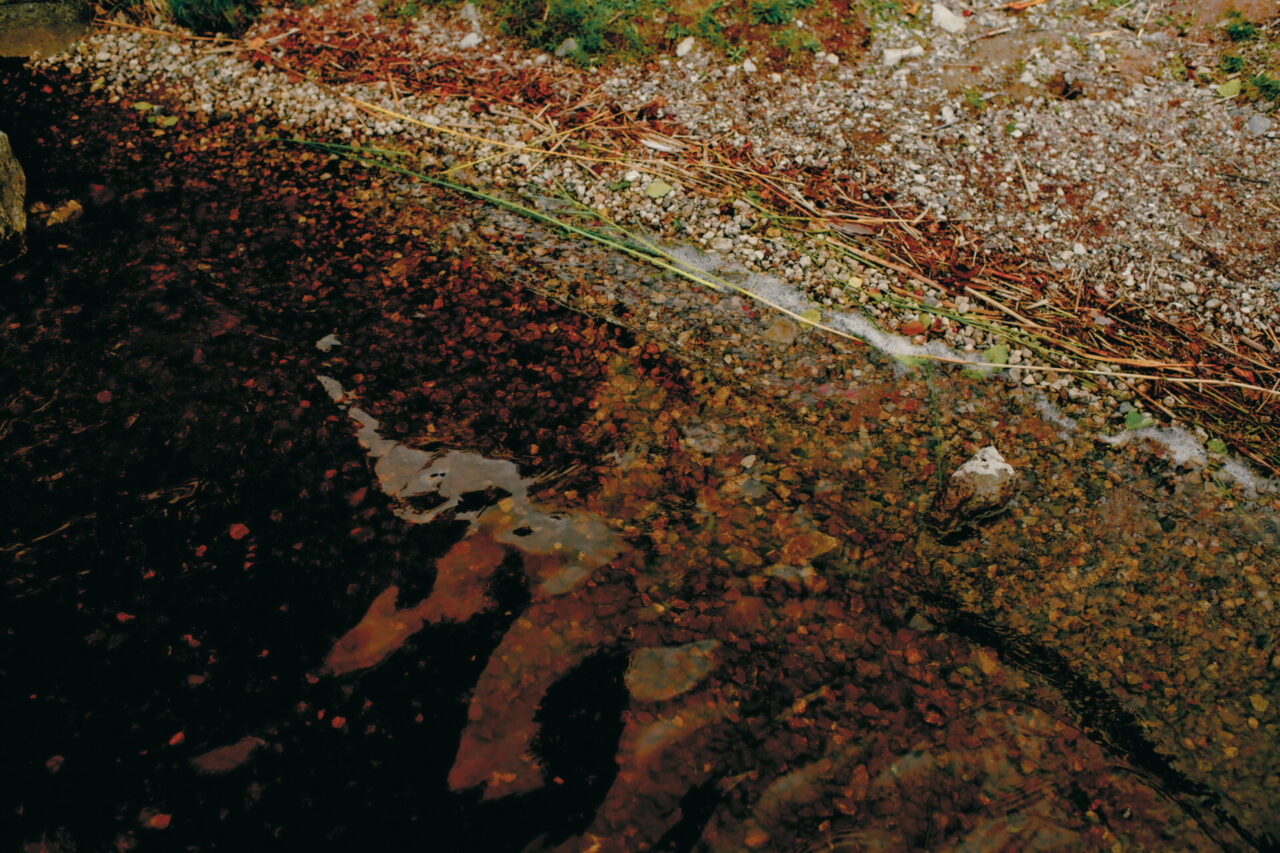
The future collectivity of towns like these, across the West, remains in dispute. There was a Nazi one year escorted away by 2-meter tall, gentle giant, driving organiser Pontus. A geopolitically estranged Confederate Flag flies in a shop window. I don’t want to whitewash the left-wing politics of the area. There are significant challenges in the rise of the fascist ‘Sweden Democrats’ party – a thought composed before the most recent election, and horrifyingly confirmed since. The few fascist ‘oddities’ about town are now cast in a dark shadow. They point to a bubbling, suppressed rage which has clearly been building here for many years. The town, in a larger context of far right-wing sentiment, is an escape from the ‘globalised’ city. As an outsider, I wonder about the red barns and nationalist cake shops, about the “return to white” tradition which holds so closely those images of cottages amongst Silver Fir trees. The inhabitation of small towns by a former countercultural left is far removed from the political reality of the present. Today, an influx of highly traditionalist families make newly walled bastions out of industrial hubs ironically emptied by their conservative forebears.
There is a renewed call for further mining in the region too: not iron, instead Rare Earth Metals and minerals for phone screens and transistors. Like the unmanned caretakers of the grass observable around town, modern mining is increasingly performed by near-autonomous machines. Ikea’s plantation forests some kilometres away are stripped like grease by saw-toothed self-governing mouths. The Iron industry became TV in 1981, and that TV company went bust in 2010, transfigured by digital streams.
Saturday opens with Aïsha Devi’s birthday and Asian Dope Boys jumping on stage to lead a singalong. The intermingling of performers and observers is a singular quality of the smallness of Norbergfestival. I watched Naoko Sakata play on an upright piano in the mine with its internal hammers exposed. A gentle rain came down at sunset and everyone gathered around the controllers to escape the weather. Piano Princess played air horn sirens, and then an edit of Vivaldi’s Four Seasons—to cheers. Encounters with people in the audience who have been coming for a decade, or longer, are normal here. There are characters everywhere. Swedes who spent their teenage years on niche forums, who have a better knowledge of Grime than a Brit. Danes built like an agalma to health—drills hanging off their belts—ready to disassemble a stage at 7am. There are performers who have come back after nearly 20 years, like AGF and Vladislav Delay who played first in Norberg in 2005. And there are new volunteers already forming a tight-knit community, ready to take up the mantle. I met some of my closest friends here. Those friendships endure.
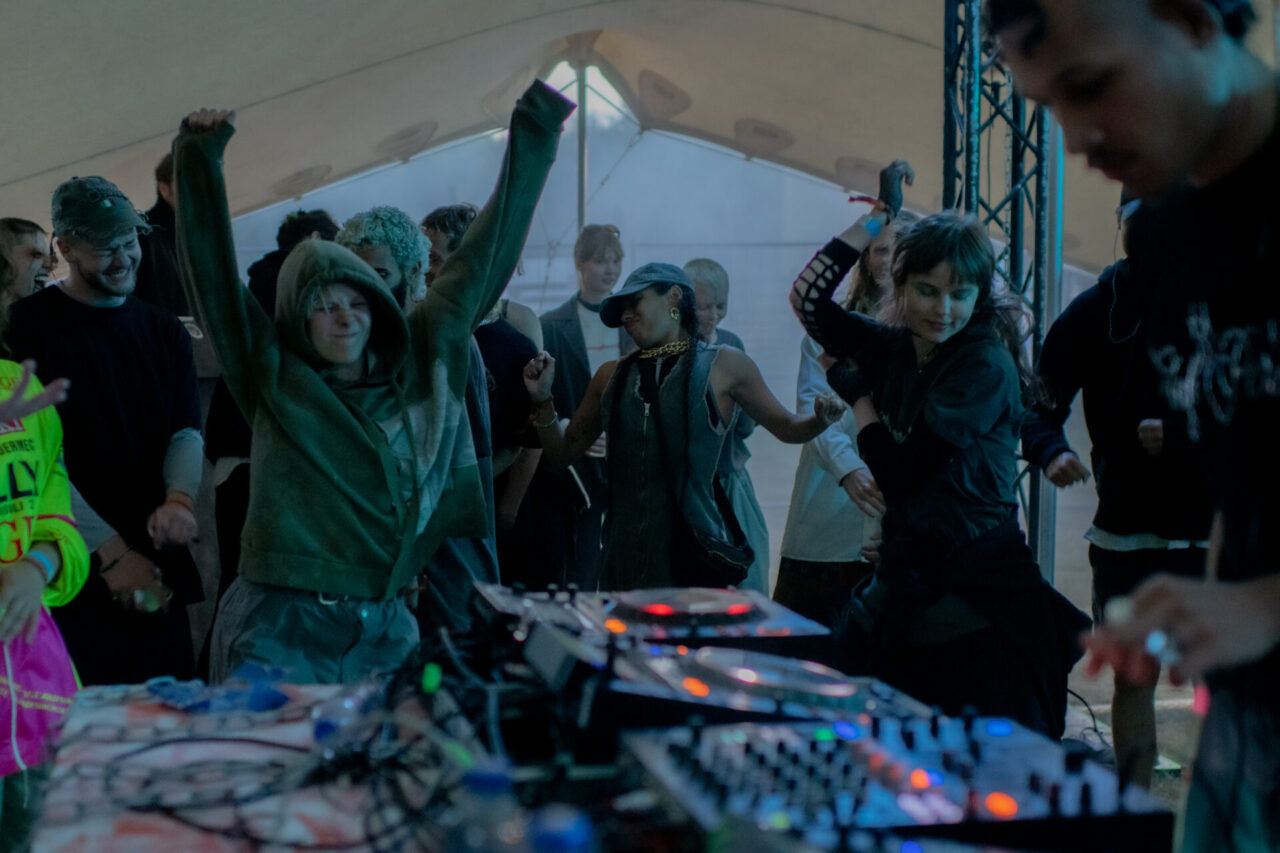
The changing material concerns of the mine and its town make way for more detached questions about the role of this post-industrial space. Certain musics desire this sort of space inherently – Techno since its birth has sought concrete and steel. Trance and hardstyle have favoured graffitied bunkers. What sort of music seeks a crocheted tent in a forest, something perforated, something transparent? It’s necessary in this moment to question the fetishisization, the veneration of these post-industrial spaces and their novel counterparts. What is the materiality of the future – Plastic? Soy? Seed oils? Cellophane? Norberg instead is a place away from the digital and the synthetic. I barely opened an app beyond my note-taking. And it’s not that the mine doesn’t produce its own incredible, special musical outcomes. But the festival thrives in its connection to the outside world and its shifting political concerns. As the physical landscape has shifted, the emotional layers move too.
Exploited Body closes the festival with a beautiful set of measured, elegant UK bass music, melodic experimentalism, and then finally, a Swedish version of homegrown Basshunter’s Now You’re Gone. The rumoured after-party (unaffiliated with the festival) sees the crowd walk through the forest along unused train tracks from the 50s to an equally exceptional location I can’t describe in good faith. In the morning we run back to the mine, as the songs of Norberg’s past describe. Actually, I should say we walk carefully, along tracks and wood sleepers annealed like glass by dew-light. Here, no sightless nights. An incomplete, unsetting Sun of the far north brings a semblance of sunset only moments before rising once more; memories frequently returning to the silhouette of the mine in that brief half-light.
This essay was originally published in Texture Magazine Issue #2 ~ Available here
